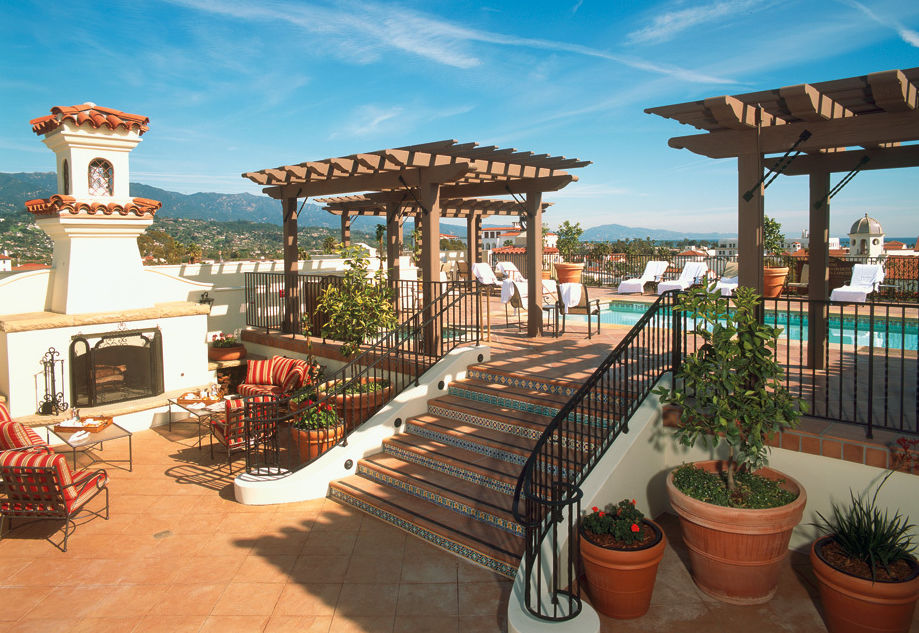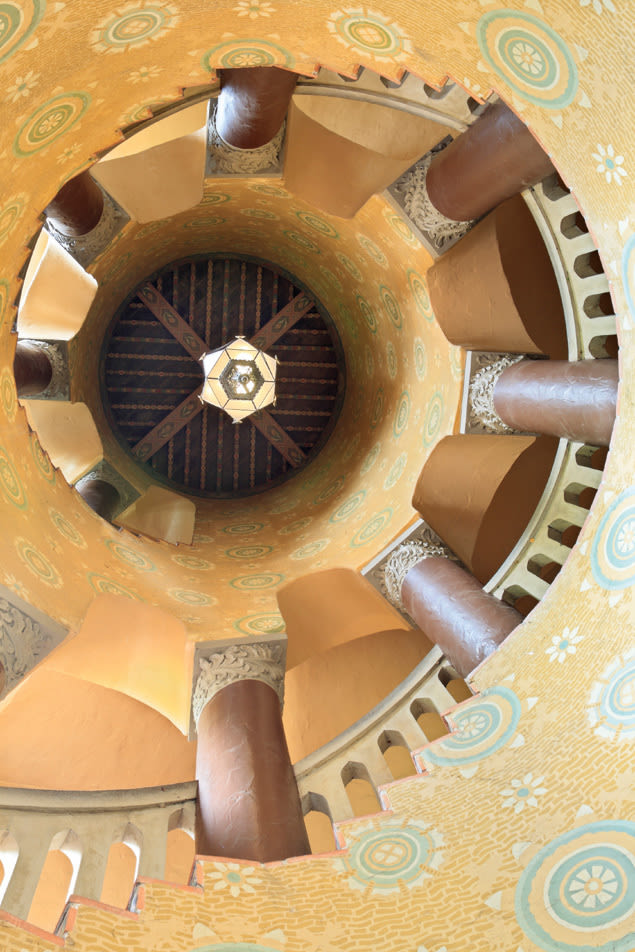Mission Statement

Image: Canary Hotel
THE ONLINE POSTING for weekly bike rides organized by Santa Barbara’s most elite road cycling club, Echelon, reads: “Depending upon how the local egos are feeling … the pace can be anywhere from a piano cruise at 18 mph to a blazing 30+ mph.”
On the second day of our stay in Santa Barbara, I and my lapsed-mountain-bike-racer boyfriend, Todd, considered joining the peloton—after all, Lance Armstrong and the Discovery team (later the US Postal Service crew) used to train on these picturesque slopes. Ultimately, we decided against a day of extreme quad burning; to properly enjoy this beach town sandwiched between the Pacific Ocean and the Santa Ynez Mountains, we preferred traveling at a more leisurely pace.
We embarked on a 15-mile loop ride, which circles east through the mountains’ foothills and the neighboring town of Montecito. First, we pedaled into Sycamore Canyon, a mile-long road shaded by hulking eucalyptus trees and, as its name would suggest, the occasional sycamore. As we gradually climbed the rim, shade gave way to a prickly-pear-and-palm-lined street and a sunbaked neighborhood filled with the lush, manicured grounds of estate homes. We could see the Pacific only intermittently, but we felt the breeze wafting in off the water. From what I hear, this was a typical Santa Barbara day: sunny, cool, with bluebird skies blessedly free of smog.
We swung onto Mountain Drive (an official city-designated bike route) and found ourselves among villas with red-tiled roofs surrounded by green lawns and stands of cypress trees, separated by low-slung stucco walls. We found out later that there’s a reason this neighborhood resembles an Italian village: In the 1800s a cadre of wealthy Midwesterners moved here, bringing with them their expert gardeners and stonemasons, many of whom were Italian.
An ideal climate and Mediterranean aesthetic, it turns out, are just ancillary reasons to visit this classy Southern California community of 90,000. Its slow pace, small-town feel, and unspoiled landscape have made Santa Barbara the anti-LA of Southern California, and are the reasons why celebrities, from Charlie Chaplin to Oprah Winfrey, have retreated here since the 1920s.
In fact, locals openly eschew the sprawl of their southern neighbor in favor of a more intimate coffee-and-bike culture: California’s version of Portland, if you will. “We have a different attitude and views here,” says Ralph Fertig, president of the Santa Barbara Bicycle Coalition, an advocacy group that promotes bike commuting. He says the community is bent on preserving its history while ensuring its future is free of another freeway or scads of ticky-tacky condos cluttering the coastline. “We always say, ‘Don’t let Los Angeles happen to us.’”

Ask any Santa Barbaran for a history lesson and he’ll probably rattle off how the Spanish settled here in the 1780s and brought with them a military (to protect the land) and their faith, Catholicism. It was a Spanish friar who ultimately bestowed a name on the town: His ship took shelter here on December 4, the day of the Feast of Santa Barbara.
On the third morning of our visit, Todd and I left our hotel, the recently renovated Canary Hotel, and walked one block over to State Street, the epicenter of downtown’s boutiques, cafés, and historical buildings. (The city is laid out in a user-friendly grid and is easily explored on foot.) We started at the 1929 county courthouse, where we climbed to the 80-foot-tall clock tower and peered over the roofscape of red tiles that stretched from mountains to ocean.
Then we wandered over to Perdido Street to explore the Presidio de Santa Barbara, the city’s original Spanish fort, built in 1782. We marveled at the construction (it was built with sun-dried adobe bricks stacked on a foundation of sandstone boulders) and at the ceilings adorned with “vigas”—heavy wooden rafters commonly seen in Spanish architecture. And looming just a mile away to the east was the Santa Barbara Mission, built in 1786. It was, as usual, packed with tourists while its double bells welcomed an active congregation.
By 4 p.m., we were thirsty after all that walking and exploring. We drove 10 miles northeast of town, up San Marcos Pass to Cold Spring Tavern, an 1860s-era log cabin nestled in a bend in the road. Inside, a rockabilly band played while we ordered pints of the tavern’s signature Stagecoach Blonde, which Paul Wright, owner of nearby Island Brewing Company, makes for the tavern. “Here it’s like you could be anywhere, in any time,” Wright said. A total escape. All of Santa Barbara felt like that to me, from the Spanish-influenced architecture to the Tuscany-inspired landscape leading to Montecito to the pristine coastline.
On our last night in town we could see all of these things from the Canary Hotel’s rooftop deck. We settled into a plush couch near the swimming pool, where the Alma Rosa Winery hosted a tasting for guests. Snuggling up with glasses of its 2006 pinot noir, we waited for the sun to make its exit and watched the orange light play off the surrounding roofs and the Santa Ynez foothills, fully appreciating what makes all the locals so proud.




